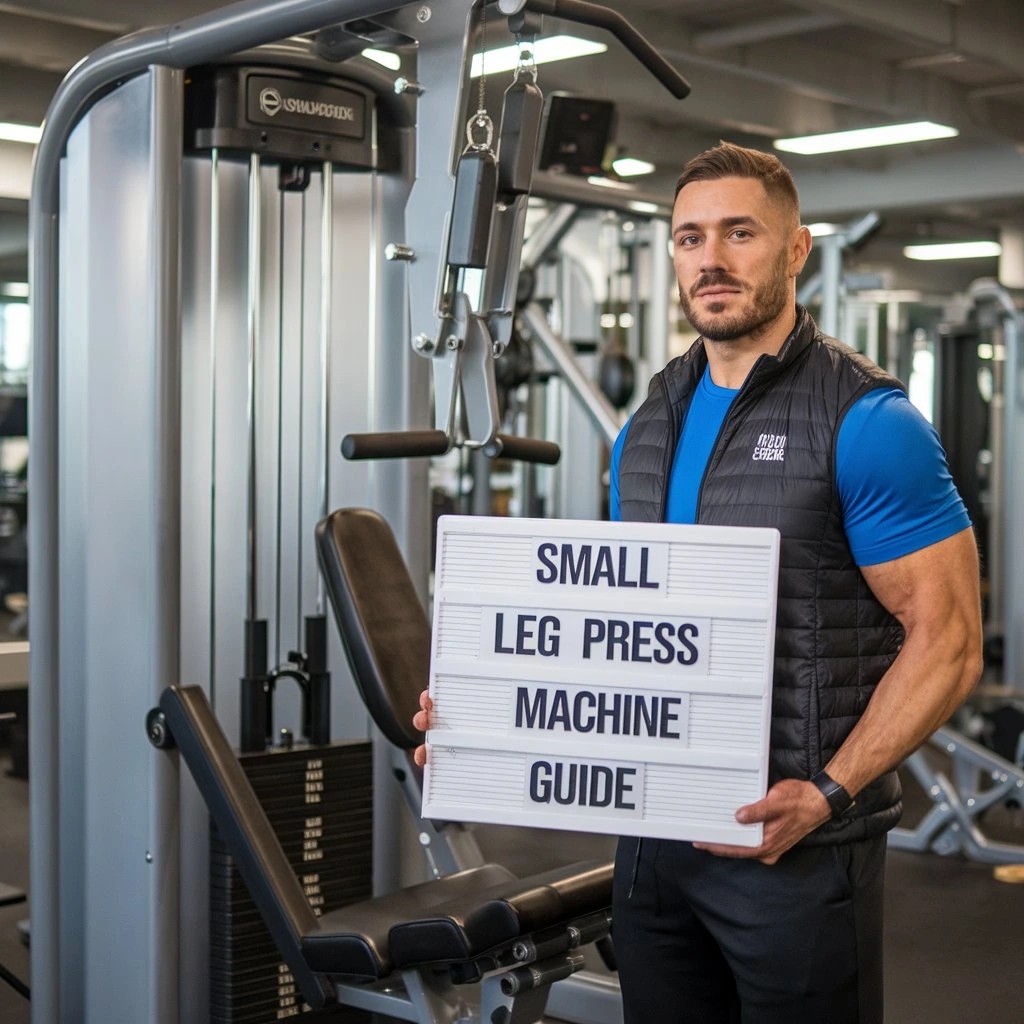A small leg press machine is a piece of fitness equipment. It is designed for exercising the lower body, especially the leg muscles. It typically consists of a seat, a platform for placing the feet, and a system for adding or removing weights. Larger leg press machines are found in gyms. The small leg press machine is compact. It is suitable for a home or limited space.
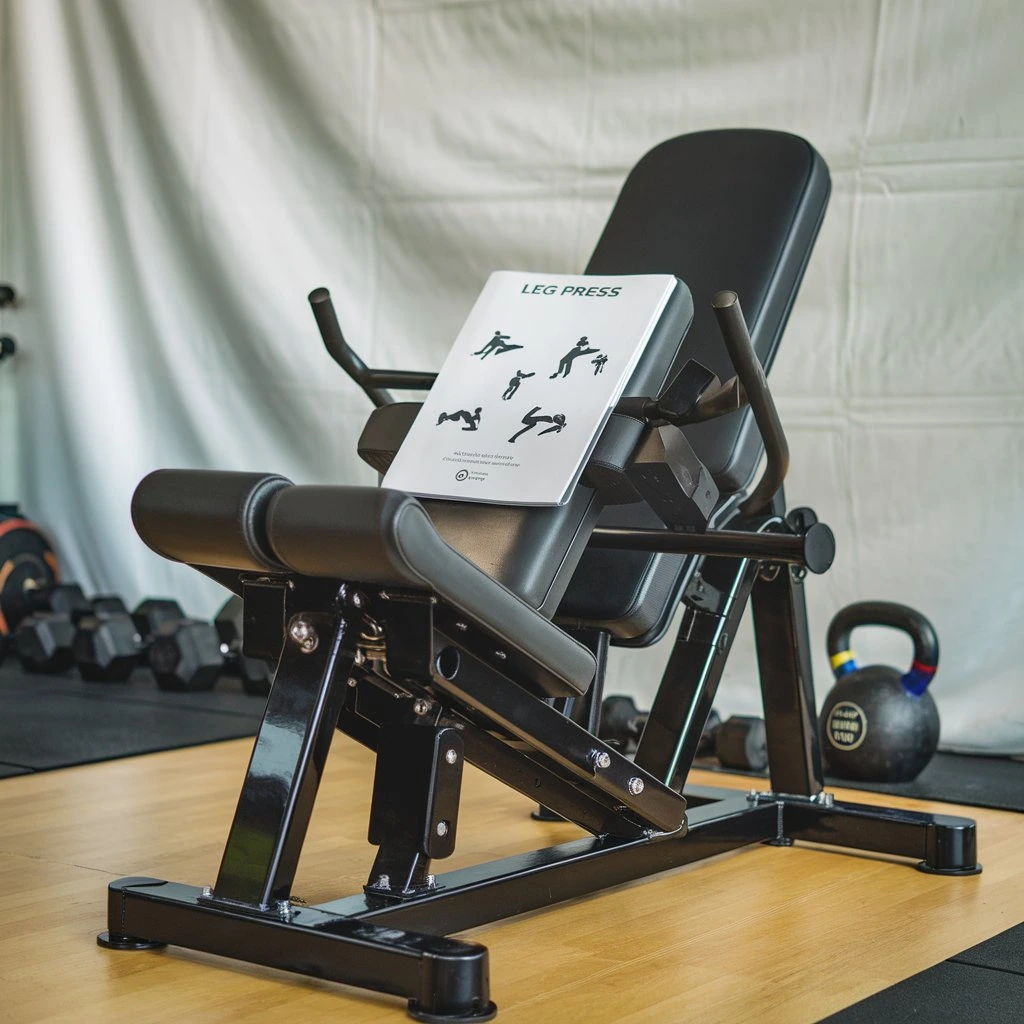
Purpose and Benefits
The small leg press machine mainly aims to strengthen and tone the leg muscles. It works the quadriceps, hamstrings, and glutes. Users push against the platform with their feet. This engages these muscles in a controlled way. It promotes muscle growth and endurance.
One key benefit of the small leg press machine is its ability to target specific leg muscles. It does this while minimizing strain on the lower back and joints. This makes it ideal for those looking to build leg strength. They can do so without risking injury or discomfort.
Also, the small leg press machine is versatile in terms of resistance levels. Users can adjust their weight to their fitness level and goals. You can use this machine to build muscle. You can also use it to improve endurance or leg strength. It offers a customizable workout.
Description of Small Leg Press Machine
The small leg press machine is like a chair with a big board connected to it. It’s not too big, so it won’t take up a lot of space in your home gym. The chair part is where you sit, and the board is where you put your feet.
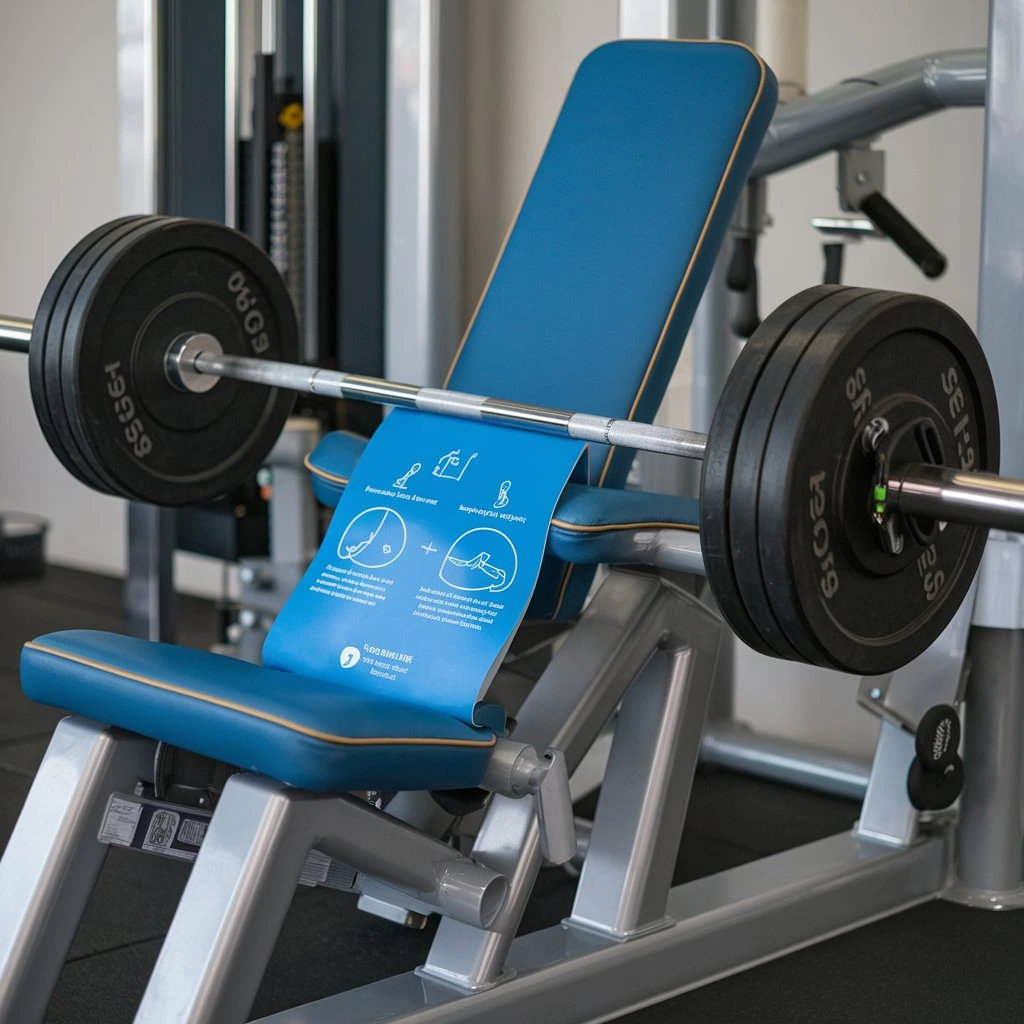
The small leg press machine has a few main parts. They are the chair, the board, and the metal frame. All of it is held together by the frame. The chair is where you sit, and it’s usually adjustable so you can find the right position for your body. The board is where you put your feet, and it’s attached to the frame with strong bolts. The frame is sturdy and stable, so you can push against it without worrying about it tipping over.
The small leg press machine can handle different amounts of weight, depending on how strong it is. Some machines can handle just a little weight, while others can handle a lot. When you push against the board with your feet, the machine uses resistance to make it harder for you to move. This helps you build muscle and get stronger over time.
Types of Small Leg Press Machines
Traditional plate-loaded machines: The most common type of leg press machines. You’ll find them in gyms. They usually have a seat and a large platform where you put weights, called plates. You sit on the seat, place your feet on the platform, and then push the platform away from your body using your legs.
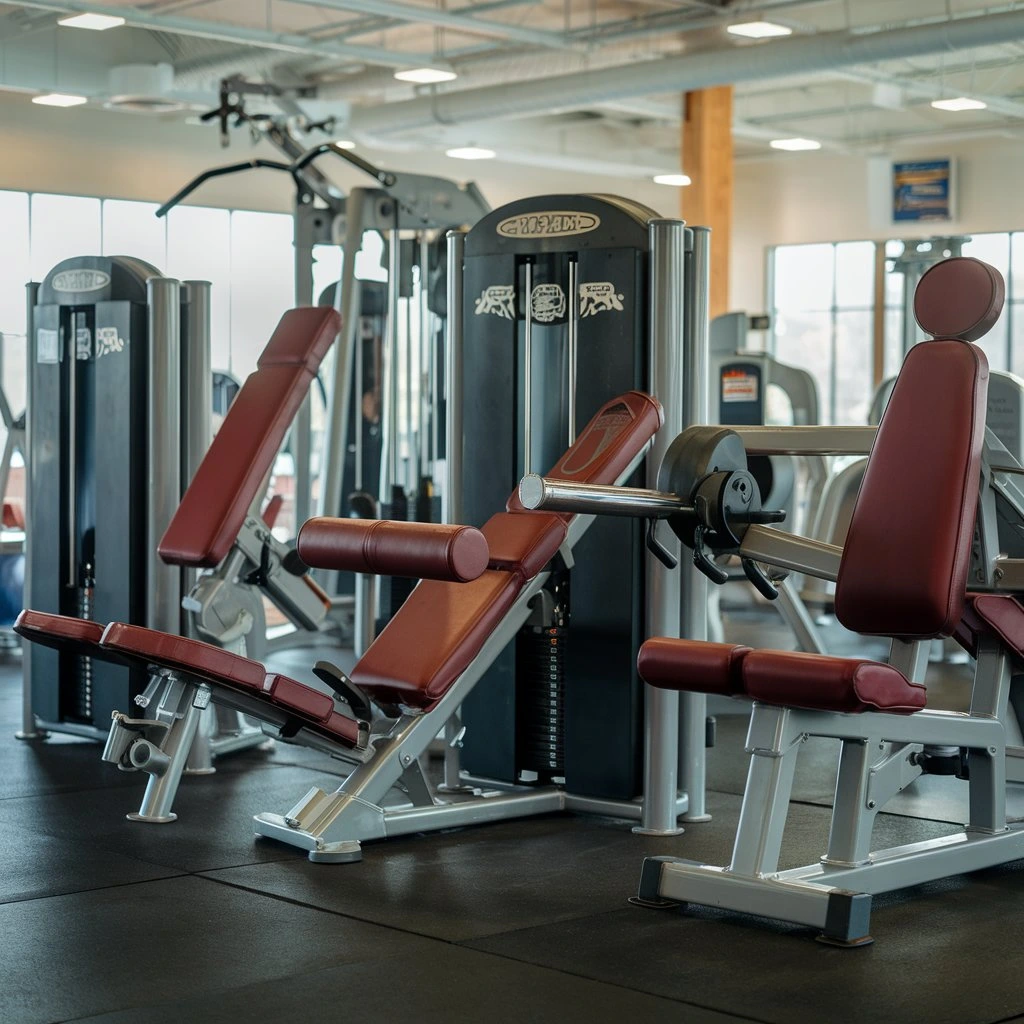
Compact hydraulic or pneumatic machines: They use hydraulic or pneumatic systems, not weights. Hydraulic systems use fluid to create resistance, while pneumatic systems use air pressure. They are often smaller and more compact than traditional machines. This makes them suitable for home gyms or places with limited space.
Portable or foldable versions: They come in portable or foldable versions. These machines are designed to be easily moved or stored when not in use. They’re light and often foldable. You can tuck them into a closet or under a bed when you’re done working out. They’re great for people who don’t have a dedicated gym space or who like to work out on the go.
Benefits of Small Leg Press Machines
Targeted muscle groups: These machines target key muscles. They are great for small leg presses. These include the quadriceps, which are the front of your thighs. Also, the hamstrings, which are the back of your thighs, and the glutes, which are your buttocks. Using these machines. You can focus on toning and strengthening these key muscles.
Low impact on joints compared to squats: Squats put a lot of pressure on your knees and back. Leg press machines offer a more controlled and stable movement. This means they can be gentler on your joints. They are a good option for people with joint issues or those who want to cut the risk of injury.
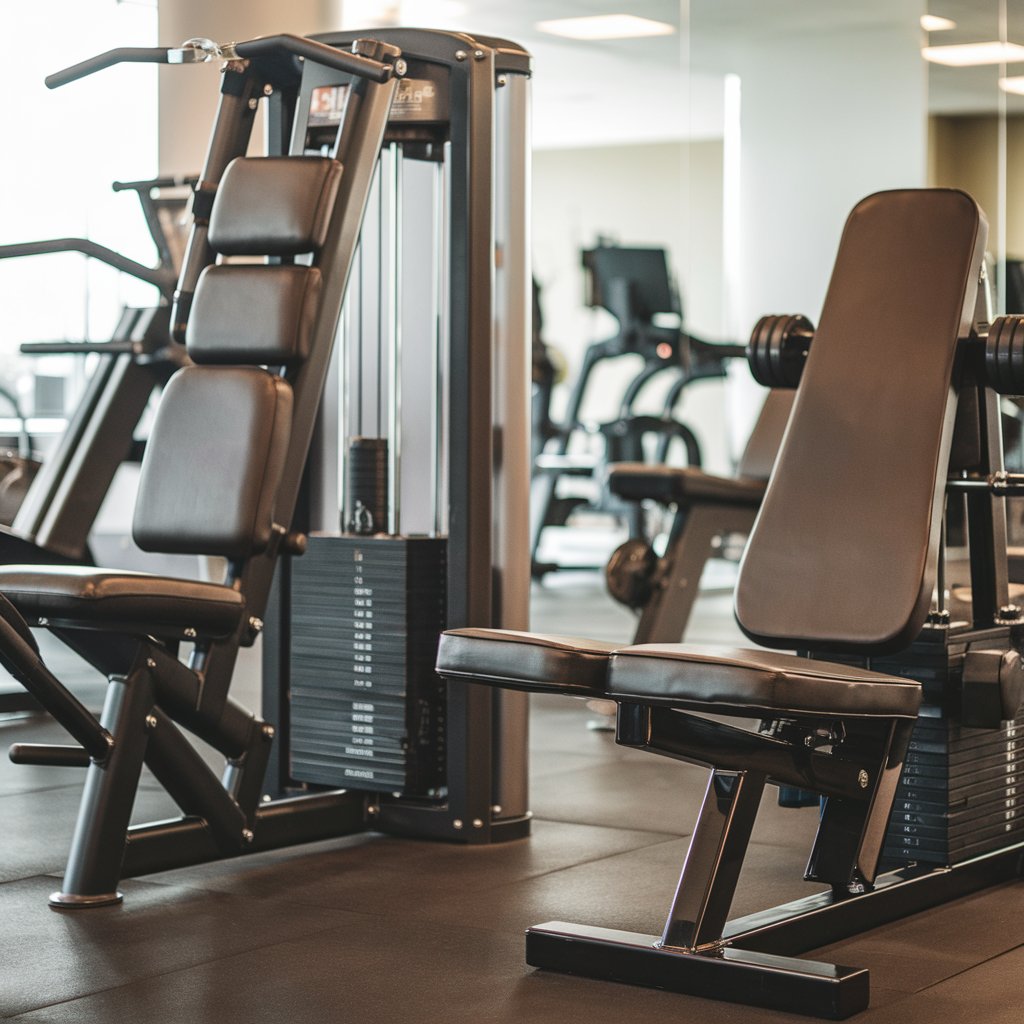
Versatility in exercises: Small leg press machines might seem limited in size. But, they offer many exercises and intensity options. You can change your foot position. You can adjust the weight. You can also add resistance bands or other accessories to make it harder. This versatility allows you to customize your workouts and target different muscles effectively.
Space-saving and home gym suitability: Small leg press machines are compact. They take up less space than larger gym equipment, like squat racks. This makes them ideal for home gyms. Or for smaller workout spaces where you might not have room for bulkier machines. Also, since they’re designed to be smaller, they’re usually cheaper too. This makes them a practical option for anyone setting up a home gym on a budget.
How to Use a Small Leg Press Machine
Proper Setup and Adjustments
- First, raise the seat height so your knees are 90 degrees from the floor when your feet are on the footplate.
- Make sure the backrest is comfortable against your back. It should support you throughout the exercise.
- Adapt the weight resistance to your level of fitness. Begin with a lighter weight until you’re comfortable with the movement.
Correct Body Positioning and Form
- Sit on the machine. Keep your back flat against the backrest and your feet flat on the footplate. Put them shoulder-width apart.
- For stability, hold onto the grips on each side of the seat.
- Throughout the workout, keep your chest up and your core active.
- Press through your heels as you extend your legs, pushing the footplate away from you.
- To avoid strain, try not to lock your knees at the height of the exercise.
- Bend your knees slowly to lower the weight. Keep control over the movement.
Safety Precautions and Common Mistakes to Avoid
- Start with lighter weights to avoid injury. Then, increase the resistance as you get more comfortable with the exercise.
- Avoid rounding your back. Also, avoid arching it too much. This can strain your spine.
- Keep your knees aligned with your toes. Do this throughout the exercise to avoid stress on your joints.
- Don’t allow your knees to collapse inward as you press the weight, as this can strain your knees and lead to injury.
- Never lock out your knees at the top of the movement, as this can cause unnecessary pressure on your joints.
- If you feel pain during the exercise, stop. Ask a fitness pro or healthcare provider.
Maintenance and Care
Cleaning and Lubrication
- Regular Cleaning: Wipe down the machine after each use with a clean, damp cloth to remove sweat and dirt. This aids in preventing dirt accumulation.
- Lubrication: Apply a bit of lube to the moving parts every month. These parts include the joints and hinges. This keeps them working smoothly and prevents squeaking.
Regular Inspection of Components
- Check Bolts and Nuts: Inspect all bolts and nuts to ensure they are tight. Loose bolts can affect the stability of the machine. Tighten any loose ones with a wrench.
- Inspect Cables: Look over the cables for signs of wear and tear such as fraying or kinks. Replace any damaged cables to prevent accidents.
- Check Upholstery: Examine the upholstery for tears or excessive wear. To avoid mishaps, replace any broken wires. lace any damaged padding to ensure comfort and safety during workouts.
- Inspect Weight Plates: Make sure weight plates are securely attached to the machine. Loose plates can cause imbalance during exercises.
Troubleshooting Common Issues
- Squeaking Sounds: If the machine is making squeaking sounds, it may need lubrication. Apply lubricant to the joints and hinges to reduce friction.
- Uneven Resistance: If you notice uneven resistance during workouts, check the weight plates. Make sure they are evenly distributed. Adjust as needed.
- Stuck or Jammed Parts: If any parts of the machine get stuck or jammed, stop using it immediately. Inspect the affected area for obstructions or damage. Clear any debris and, if necessary, contact a professional for repairs.
Considerations for Purchasing
When thinking about getting a small leg press machine, there are a few big things to keep in mind. They will help you make sure you get the right one for you.
- Budget and affordability: First, figure out your spending limit. Small leg press machines can vary in price. So, knowing your budget can help you limit your choices. It can help you avoid overspending.
- Available space and storage options:
- It’s a small leg press machine, so it might not take up as much space as a larger one. But, you still need to make sure you have enough room for it. Measure the space where you plan to put it and make sure the machine will fit comfortably. Also, consider if you’ll need to move or store it when it’s not in use. Look for one that’s easy to move or can be folded for storage if needed.
- Quality, durability, and warranty: You want a machine that is well-made and will last. It should have a good warranty. Check the materials it’s made of and read reviews to see what other people have said about its durability. It’s also a good idea to look for one that comes with a warranty, so you’re covered if anything goes wrong.
Conclusion
Small leg press machines offer many benefits. They can help anyone improve their leg strength and overall fitness. They offer a convenient, space-saving option. You can use them at home or in commercial gyms. They are compact. They can fit into small spaces without losing effectiveness.
Also, a small leg press machine can target specific leg muscles. These include the quadriceps, hamstrings, and glutes. Better muscular growth and strength result from this. This approach is targeted. It allows for a more efficient workout. This is especially true for people who may struggle with traditional leg exercises. These include squats and lunges.
Also, adding small leg press machines to your fitness routine can add variety. They keep your workouts engaging and challenging. These machines are for beginners and seasoned fitness fans. They offer a user-friendly way to build lower body strength and endurance.
In short, small leg press machines are a useful addition. They work in both home and commercial gyms. They offer convenience. They target muscles and offer variety. They are a good investment for anyone with fitness goals. So, add them to your workouts. You will see the benefits!

